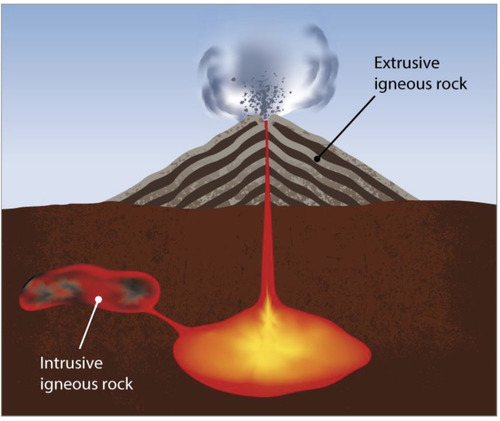- Filter By :
- Geography
- History
- Indian Heritage & Culture
- Indian Society
-
Q. Primary rocks form the foundation of Earth’s geology. Discuss their types, formation processes, and distinguishing features. (150 words)
16 Jun, 2025 GS Paper 1 GeographyApproach:
- Introduce the concept of primary rocks and their significance in the Earth’s geological structure.
- Describe the different types of primary rocks and discuss their formation processes and distinguishing characteristics.
- Conclude suitably.
Introduction:
Primary rocks, or igneous rocks, form the foundational layer of the Earth's lithosphere. They are the first rocks to be created when molten magma or lava cools and solidifies. These rocks are considered the original geological material, from which all other rock types, such as sedimentary and metamorphic rocks, evolve over time through various geological processes. These rocks offer critical insights into Earth's geological history and internal processes, helping us understand the dynamics that shape the planet.
Body:
Formation Process & Types of Primary Rocks:
- Primary rocks are formed from molten material, either magma (beneath the Earth’s surface) or lava (on the Earth's surface).
- Primary rocks are classified into three types-Intrusive, Extrusive, and intermediate, based on the location and duration of cooling of the molten material:
- Intrusive (Plutonic) Rocks: These rocks form when magma cools slowly beneath the Earth’s surface, allowing larger crystals to form.
- For example, granite, diorite and gabbro.
- Extrusive (Volcanic) Rocks: These rocks form when lava cools rapidly at or near the Earth's surface, resulting in fine-grained textures.
- For example, basalt and pumice.
- Hypabyssal or Intermediate Rock: Intermediate rocks, such as dyke rocks, form between plutonic and volcanic levels and are typically semi-crystalline in structure.
- Intrusive (Plutonic) Rocks: These rocks form when magma cools slowly beneath the Earth’s surface, allowing larger crystals to form.
Distinguishing Features of Primary Rocks:
- Mineral Composition: Primary rocks are primarily composed of minerals like quartz, feldspar, mica, amphibole, and olivine, with specific minerals depending on the magma’s chemical composition.
- Texture: The texture of primary rocks can vary from fine-grained to coarse-grained, depending on how quickly the molten material cools.
- Slow cooling (granite) results in larger crystals, while Rapid cooling (basalt) produces smaller, fine-grained crystals.
- Crystal Size: Larger crystals are visible in intrusive rocks due to slower cooling, while smaller crystals are present in extrusive rocks.
- Hardness and Durability: The mineral crystals in primary rocks typically interlock, providing strength and durability. These rocks are generally harder and more resistant to weathering compared to other rock types.
- Homogeneous Structure: Primary rocks are typically uniform in composition, although variations can occur depending on the type of magma and the cooling conditions.
- Absence of Fossils: Since primary rocks are formed from molten material, they do not contain fossils, unlike sedimentary rocks.
Conclusion:
Primary rocks are fundamental in the study of geology, offering vital clues about the Earth's internal processes. The study of these rocks not only helps in understanding the Earth’s formation but also sheds light on the dynamic processes, including volcanic activity and plate tectonics, that continue to shape the planet’s surface.
To get PDF version, Please click on "Print PDF" button.
Print PDF






